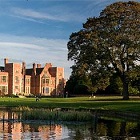Navigation
| Hi, you are logged in as , if you are not , please click here You are shopping as , if this is not your email, please click here
George Howard, Lord Howard of Henderskelfe: A Life in Yorkshire and Beyond |
George Howard, Lord Howard of Henderskelfe: A Life in Yorkshire and Beyond |